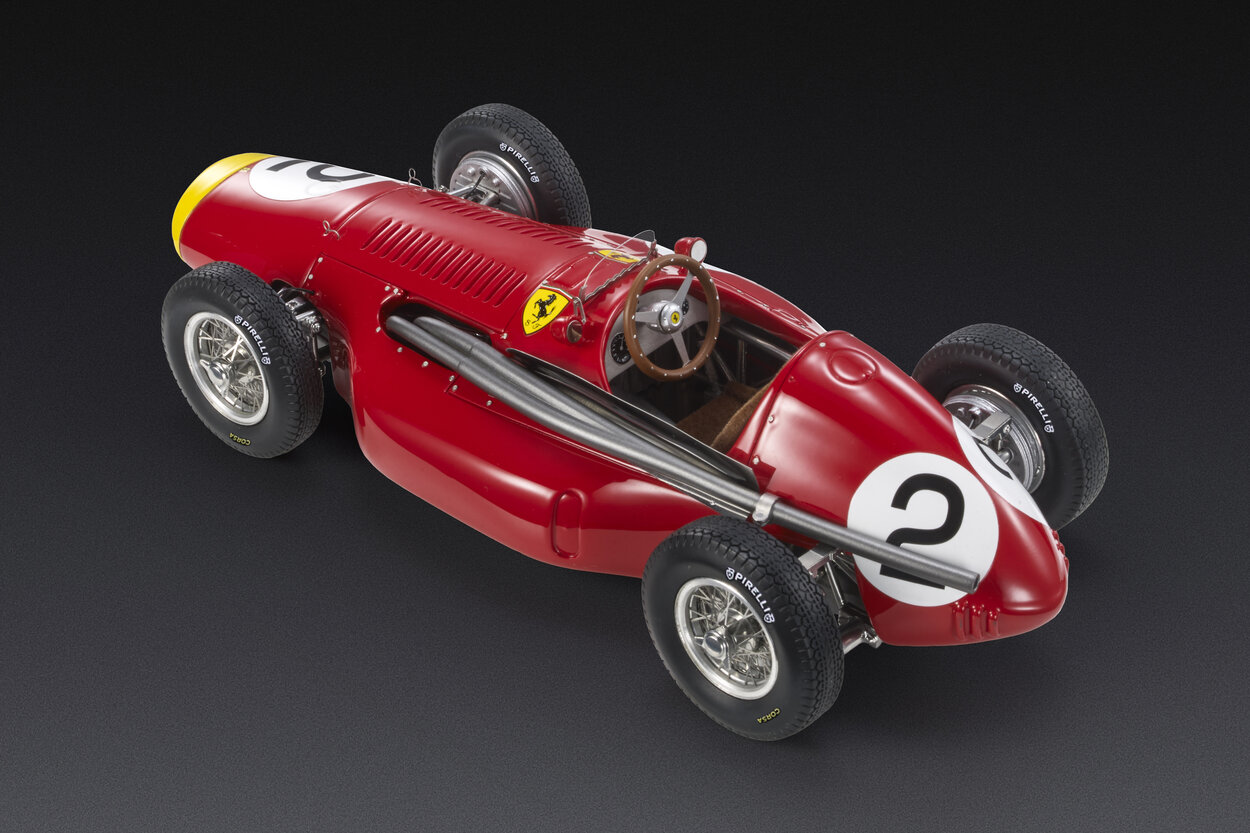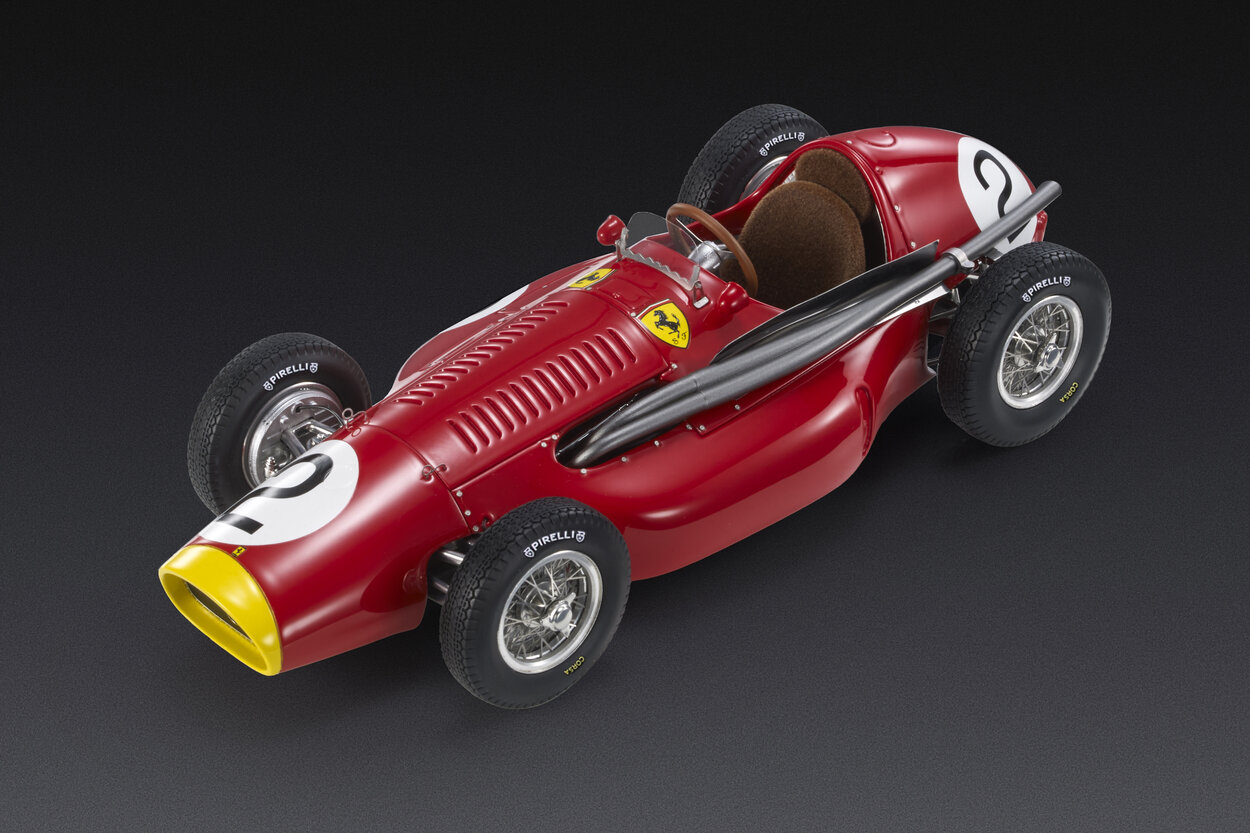Ferrari 553
It’s a very interesting single-seater for several reasons, starting with the fact that it begins its life as a Formula 2 car in the last race of the 1953 season, the second and final season in which Formula 2 cars compete for the Formula 1 world championship title. The transition to the higher category occurs in the winter between 1953 and 1954 when the 4-cylinder inline engine designed three years earlier by Gioachino Colombo is increased from two liters to two and a half liters in displacement.
But the uniqueness of the 553 is mainly linked to the chassis, which completely breaks with Ferrari’s history and introduces previously unseen solutions, such as the lattice tubular structure that replaces the traditional longitudinal and transverse members, and the fuel tanks positioned on either side of the cockpit. And it is precisely the positioning of the fuel tanks, which creates a sort of singular bulge on the sides – along with the very aggressive nose, that contributes to the name “Squalo” (Shark in Italian) by which the 553F1 unofficially became known.

Drivers:
Mike Hawthorn: It’s the future 1958 world champion who brings the 553F1 to its only victory in its short and odd career. This happens in the Spanish Grand Prix, which concludes the 1954 season. For the Englishman, it’s his second career victory. In the 1954 season, Hawthorn also drives it in the French Grand Prix at Reims but is forced to retire.
Froilan Gonzalez: The Argentine, who in 1951 secured Ferrari’s first victory in Formula 1 history, is the driver who pilots the 553F1 in the most races, three to be precise. Gonzalez finishes fourth at Spa and third at Monza. However, he is forced to retire at Reims.
Umberto Maglioni: He is the only driver to have driven the 553 both in 1953 and in 1954. In the 1953 Italian Grand Prix, he finishes in eighth place. In the 1954 German Grand Prix, he finishes seventh.
Nino Farina: One race and one retirement at the wheel of the 553F1 also for the 1950 world champion. The race is the 1954 Belgian Grand Prix.
Our model cars:

The name of the single-seater is created by combining the unit displacement of the engine, actually rounded from 499 to 500, with the year of production, that is, 1953. For Ferrari, it is the first time that the year of construction or use appears in the name of a racing car model.
Its track use is very modest since the 553F1 never replaces a second model that Ferrari uses in the 1954 season. It achieves its only success in the last race in which it is used.

